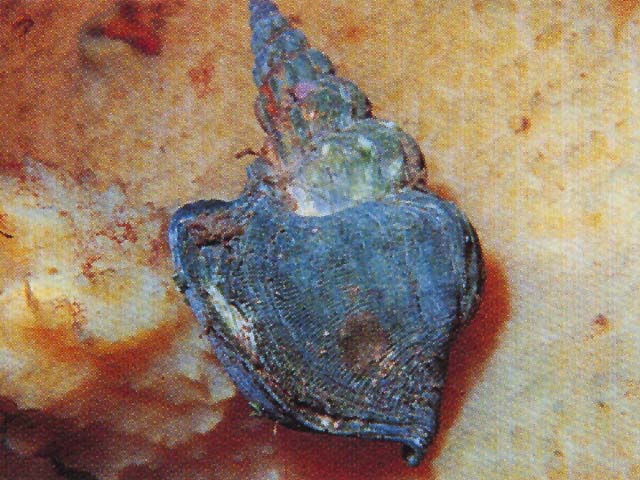|
Shell: high conical spire, rather thick and solid, with swollen whorls and very impressed sutures; outer lip is broadened and forms a large unfingered expansion; both outer and columellar lips are strongly thickened; sculpture consists of a score of strong well-spaced axial ribs, usually curving, also a spiral ornament of thin, deeply incised grooves, especially marked on the body whorl; whitish cream or grayish in color; the operculum is very small, horny and ellipsoidal, with smooth edges. Body: similar to the strombids, especially in the structure of the long and narrow foot with a smaller anterior lobe and a large posterior one that bears the operculum and enables the mollusk to leap; eyes are not pedunculated, but are at the base of the tentacles; mantle cavity contains only one gill, the osphradium and in males, the copulatory organ; radula is taenioglossan. |

